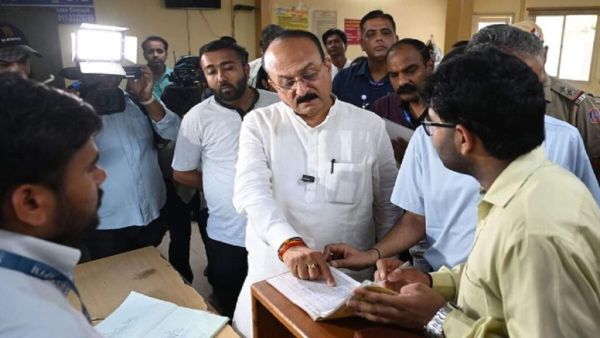Want Better Digestion? Try Sitting in Vajrasan After Meals – Here’s Why It Works
admin | June 28, 2025 1:22 AM CST

Vajrasan, also known as Thunderbolt Pose or Diamond Pose has been a trusted practice in Ayurveda and yogic sciences. Unlike most yoga asans that are avoided post-meal, Vajrasan is one of the few poses recommended right after eating for its proven benefits on gut health.
If you're suffering from indigestion or want to build a healthy gut naturally, sitting in Vajrasan might be the digestive remedy that your body needs. Let's explore how Vajrasan benefits your body.
1. Improves Digestion by Supporting Stomach Function
One of the most powerful yet underrate benefits of sitting in Vajrasan after meals is its ability to support healthy digestion. It applies a mil compression on the lower abdomen which naturally stimulates digestive organs. By improving the efficiency of your digestive system, Vajrasan can relieve common post-meal discomforts like bloating, acidity, and indigestion. It enhances blood circulation in the gut and helps accelerate the breakdown of food, making it one of the best yoga poses to include in your daily routine.
2. Reduces Bloating And Acidity
Practising the Diamond Pose for just 10-15 minutes after eating prevents acid reflux and promotes smoother digestion. By aligning the digestive organs and intestines, it aids in faster nutrient absorption and reduces symptoms like gas buildup, stomach heaviness, and acid backflow. Vajrasan can be a natural, medication-free way to manage acidity and gastrointestinal issues.
3. Enhances Nutrient Absorption
Vajrasan or the Thunderbolt Pose after meals can significantly enhance the nutrient absorption. By improving blood circulation to the stomach and small intestine, this pose boosts the efficiency of the digestive system. It helps your body absorb vitamins, minerals, and essential nutrients more effectively. Better circulation means your gut works more efficiently, reducing bloating and promoting faster metabolism.
4. Promotes Regular Bowel Movements
If you're struggling with irregular bowel movements, Vajrasan may offer natural relief. This simple yoga pose activates the lower abdominal muscles, enhances gut motility, and supports peristalsis. It helps the food to move through the digestive tract. It's especially beneficial for those with chronic digestive issues. Regular practice of this yoga pose as part of your morning or bedtime routine can improve the bowel regularity.
5. Calms The Nervous System
This seated yoga pose stimulates the parasympathetic nervous system gently. By activating this system, Vajrasan helps neutralise the effects of chronic stress and anxiety. It acts as a natural digestive relaxant by calming the mind, reducing cortisol levels, relaxing intestinal muscles, and reducing inflammation. For those struggling with IBS, gastritis, or stress-related indigestion, this pose can offer both mental clarity and physical relief.
How To Practice Vajrasan After Meals
Vajrasan is one of the simplest yet most effective yoga postures for digestion and mental clarity. Here's a step-by-step guide to practice Vajrasan correctly:
- Begin In A Kneeling Position: Start by kneeling down on a yoga mat. Keep your knees close together and allow your toes to touch. Your feet should be flat and the soles should face upwards.
- Sit Back On Your Heels: Slowly lower your body and sit back. Let you buttocks rest comfortably on your heels. Ensure that your body weight is distributed evenly.
- Maintain And Upright Posture: Keep your spine erect, shoulders relaxed, and hands resting on thighs. Gently close your eyes, relax your facial muscles, and breathe deeply.
READ NEXT
-
How to keep your skin care during the rainy season, know simple tips

-
Delhi government ordered an inquiry into allegations of rigging in night shelters

-
Parenting Tips: 9 Fun Ways To Teach Your Children The Importance of Money | Lifestyle News

-
Semen allergy is real — and often misdiagnosed; beware these signs

-
Do not copy relatives, purchase cars or houses, otherwise there may be heavy financial losses
